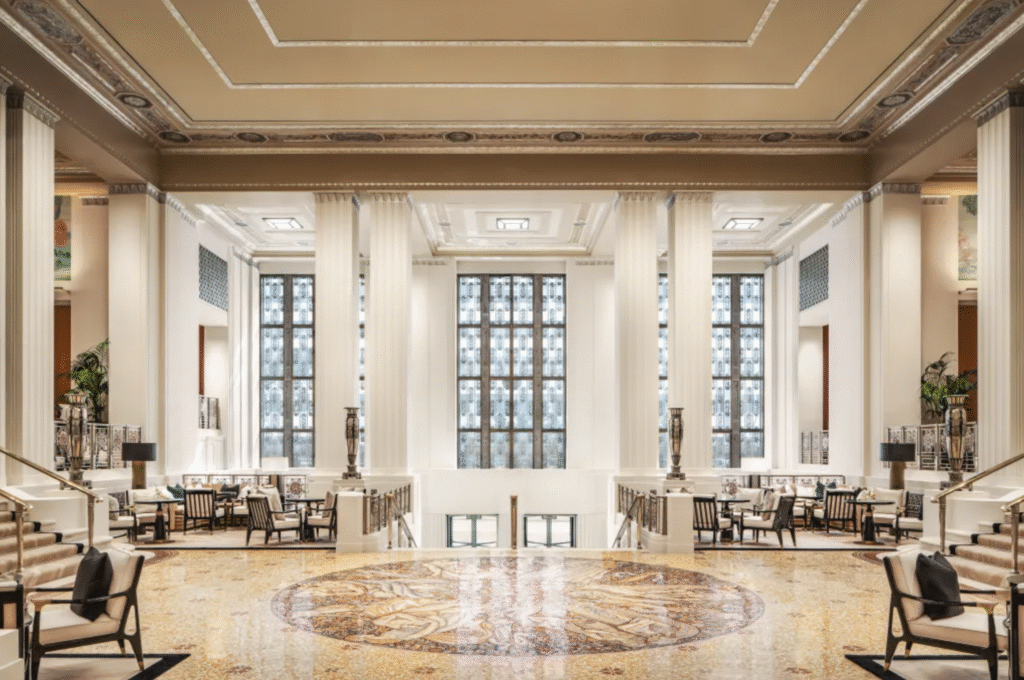The Legacy of Waldorf Astoria: A Hospitality Icon
The Waldorf Astoria New York has made an indelible mark on the city since its inception in 1893, becoming an emblem of luxury and elegance. Moving to its present location on Park Avenue in 1931, the hotel has had a profound influence on the hospitality industry while hosting a plethora of dignitaries, celebrities, and royalty. As it recently reopened its doors after an extensive eight-year renovation, the Waldorf is poised to continue its storied legacy.
A Beacon of Hope
The reopening of the Waldorf Astoria was seen as a symbol of optimism during challenging times. Historian David Freeland notes that President Hoover made a notable address for its reopening, reflecting its role not just as a luxury hotel but as a beacon of recovery for the nation during the 1930s.
Innovations that Shaped Hospitality
The Waldorf Astoria set the standard for modern hospitality by introducing distinctive amenities that have become the norm in luxury hotels today. It was the first to offer room service and in-room telephones and featured “celebrity chefs” in its dining venues. This innovation played a crucial role in making it a favorite among New York’s elite.
A Culinary Pioneer
In an era where dining out was not the norm for New York’s high society, the Waldorf Astoria revolutionized fine dining. Notably, Oscar Tschirky, referred to as “Oscar of the Waldorf,” spearheaded its culinary offerings for five decades, bringing forth iconic dishes like eggs Benedict and Waldorf Salad. The hotel’s restaurants have now been reimagined, including the new Lex Yard, which honors these culinary traditions with signature dishes.
The Return of Peacock Alley
Originally a stunning promenade connecting the Waldorf and the Astoria, Peacock Alley has been beautifully restored. This social hotspot now features a fabulous mural behind the bar and honors its heritage by showcasing the hotel’s historic clock and a piano once played by the composer Cole Porter.
A Hidden Transportation Legacy
The Waldorf’s storied history includes an underground train track that served as a discreet entrance for notable guests, including President Franklin D. Roosevelt. This feature was vital in maintaining privacy for distinguished visitors while showcasing the hotel’s exceptional planning and design.
The UN Connection
The hotel played a pivotal role when New York City became the permanent location for the United Nations headquarters in 1946. The Waldorf signed an agreement to welcome all guests, which aligned with the UN’s mission of promoting international cooperation and equality, thus becoming the preferred hotel for UN delegates.
Spacious Accommodations
The Waldorf Astoria’s original design featured 450 guest rooms, which has expanded significantly over the years. Following the recent renovations, the hotel has reverted to hosting just 375 rooms, each notably larger, averaging over 570 square feet, making them some of the most spacious in New York City.
Key Features of Waldorf Astoria
| Feature | Description |
|---|---|
| Innovation in Hospitality | First hotel with room service and in-room telephones. |
| Culinary Contributions | Home to iconic dishes like eggs Benedict and Waldorf Salad. |
| Peacock Alley | A historic promenade restored to its former glory. |
| UN Affiliation | Official hotel for the United Nations events. |
| Spacious Accommodations | Redesigned rooms averaging over 570 sq ft. |


